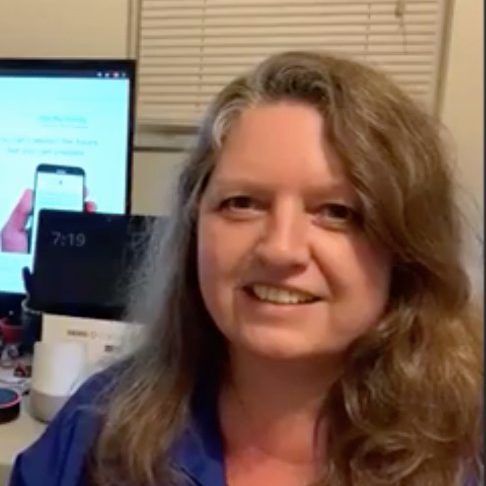Executive Summary
This was our 2nd Demo night of 2020 and this time we had founders from various parts of the world especially from North America, Brazil, and Germany showcasing their amazing products designed to assist and solve the challenges in the field of voice flow development, chatbots, and being personal assistants.
Meet The Founders

Malte Kosub
Founder, Parloa
Parloa is a Dialog Management System helping agile teams to create engaging conversations. Build for Amazon Alexa, Google Assistant, chat, and phone bots in one place.

Felipe Almeida
CEO, Loud Voice Services
Conversational experiences on Alexa, Google Assistant, Cortana, WEB, IP telEphony, messages, and Facebook. Awards/nominations for innovation including Cannes Lions and Voice Summit

Chris Maley
CTO, Speebly
Speebly is an easier way to add a touchless voice interface Speebly offers a cloud-driven voice framework to add touchless voice interaction to iPhone and Android.

Eric Sauve
Product and UX Lead, Speebly
Speebly is an easier way to add a touchless voice interface Speebly offers a cloud-driven voice framework to add touchless voice interaction to iPhone and Android.

Pat Coggins
Founder, Ask My Buddy
Ask My Buddy, Personal Alert Network, is a service available on Amazon Alexa and Google Home / Assistant voice platforms. Ask My Buddy enables voice assistants such as these to send a ‘check on me’ or ‘I’m OK’ notification to a user’s Personal Alert Network, just by using their voice.

Sheryl Coggins
Co-founders, Ask My Buddy
Ask My Buddy, Personal Alert Network, is a service available on Amazon Alexa and Google Home / Assistant voice platforms. Ask My Buddy enables voice assistants such as these to send a ‘check on me’ or ‘I’m OK’ notification to a user’s Personal Alert Network, just by using their voice.
Watch The Event Again
Event Q&A
It seems the majority of your clients are enterprise customers. Could you please explain on a few of the use cases where Parloa was used for building voice-based solutions?
Malte: So we have a lot of insurances who built their calls and experiences for routing and authentication, for example, a caller is calling to say their birth date or contract number and so on. The whole authentification process or changing of address or changing of banking details of in e-commerce. Or, to aks for their order status and query about their return labels. So, there will be a different industry with different use cases, but to name a few of them; insurances, electricity providers are some of the big industries.
So what is the pricing model for this software? Do you have a freemium option for students and hobbies?
Malte: Yes, we do have, and please reach out to us. The pricing for enterprises is you pay per user or general and obviously when it comes to call center pricing models are in per minute. It depends upon the size.
Do you have your own NLP or do you use Google or any other existing one?
Malte: Yeah, we're using Google dialogue flow and obviously the Alexa NLU. We actively want to give companies access to those NLUs and want to enable companies to leverage those NLUs for the best dialogue management system that dialogue management front end. So yeah, that's definitely the idea to leverage those NLP systems.
Are you seeing an increased interest in chatbots and voice interfaces in the COVID-19 pandemic?
Felipe: We received 50 new clients in the last three weeks because everyone needs to stay in their home. And in Brazil, it's a huge problem for working from home because we don't have this culture in a lot of big companies.
I'm curious about how did you come up with the idea of this product (Speebly), I understand that you were trying to solve a problem but how did you find out that there is a problem and how did you validate it before starting to build anything?
Eric: Yeah, well, so I've done a few startups in the past. And basically, what I found is that you kind of have to come up with a whole bunch of different ideas. So we did a kind of a few pivots before we ended up being where we are. Initially, we're in the electrical utility space, because we had done a bunch of voice work in there. And then we tried chatbots on websites, that sort of thing. And what we found is just in discussions with folks, we were able to kind of hone in on something where we thought was a real niche, which is basically getting voice apps into Siri and watches where they currently don't exist, but they should.
Dialogue flow has lots of limitations for designing multi-domain dialogues with turn taken. How do you handle such problems with the dynamic flow?
Eric: We haven't seen those problems. So we've had, lots of multi-turn authenticated, you know, very complex agents that we've developed and deployed. We've been able to work around any of the issues that we've had with dialogue flow, and with the multi turns and stuff, we've done tons of that and it's been actually quite elegant.
During your presentation, you mentioned that there's a feature of check-ins in Ask My Buddy the question is how do check-ins work? As we know those voice assistants don't talk to you practically.
Sheryl: Yeah, our check-in feature is designed so that on a daily basis, or whenever you can send a text check in to your friends and family. So it's user-initiated. It's not smart speakers initiated. So you would simply say ask my buddy, check-in with everybody and it will send out a positive alert to everyone saying that everything's okay. By the way, I'll make it up here that our check-ins and our text message or check-ins in and our alerts all come from different phone numbers so that the actual recipient can even put it in their address book and they can see very quickly whether it's a problem or not, without even listening to the actual message.
For seniors who are using this service, do you find that they understand the concept of skill, action, ecosystem, and innovation in general? The user who is asking this question found in their research that there are loads of barriers in terms of accessibility and when there isn't a visual interface. So have you faced any issues in terms of adoption for seniors like that? And what are your strategies to mitigate that?
Pat: We're actually quite surprised with the level of competency of our senior community. We have users in their 90s who send emails and are asking questions on how to expand, how to put in apartment numbers, and things like that in their contacts. So they're very attuned to the process we have now the roof of general problems across borders platforms of having to remember a skill name. Like, ask my buddy or any other we tried to make it something that could flow and become a habit, eventually with the buddy concept. Now, we have pronounced that they can do. So when they put in their contacts, they can scroll down and hit a print button that'll generate a PDF that has all the different methods of saying, you know, like to alert an individual alert everyone sends help, which alerts everyone. So there are several methods of getting this assistant.
Besides that, we should also point out that over time Amazon is making the skills a little smarter, where if you've used the same skill repeatedly, it will begin to learn. And you may in fact do not have to use the invocation name. Another point here on this is that the Google platform allows you to make your own shortcuts. And so you can make your own phrase, whatever it may be, and have it issue the command to the skill or action on Google and send the same alerts out.
So there's a question about the feature to add the reason for your alert. The question is, is it a preset number of reasons or it's an open input?
Pat: This is a natural voice and it'll you know different words and that sort of thing. The length is not really standard, but it's around 180 - 200 characters. So you could say, I fell down and was unable to reach my pizza on the table. It's just a natural voice that it will translate. Now, of course, due to the background noise or speech impediment or something like that, it may come out as I need a cheeseburger.
Sheryl: For the most part, as you can see, the text message here is a statement long enough for what people really need.
